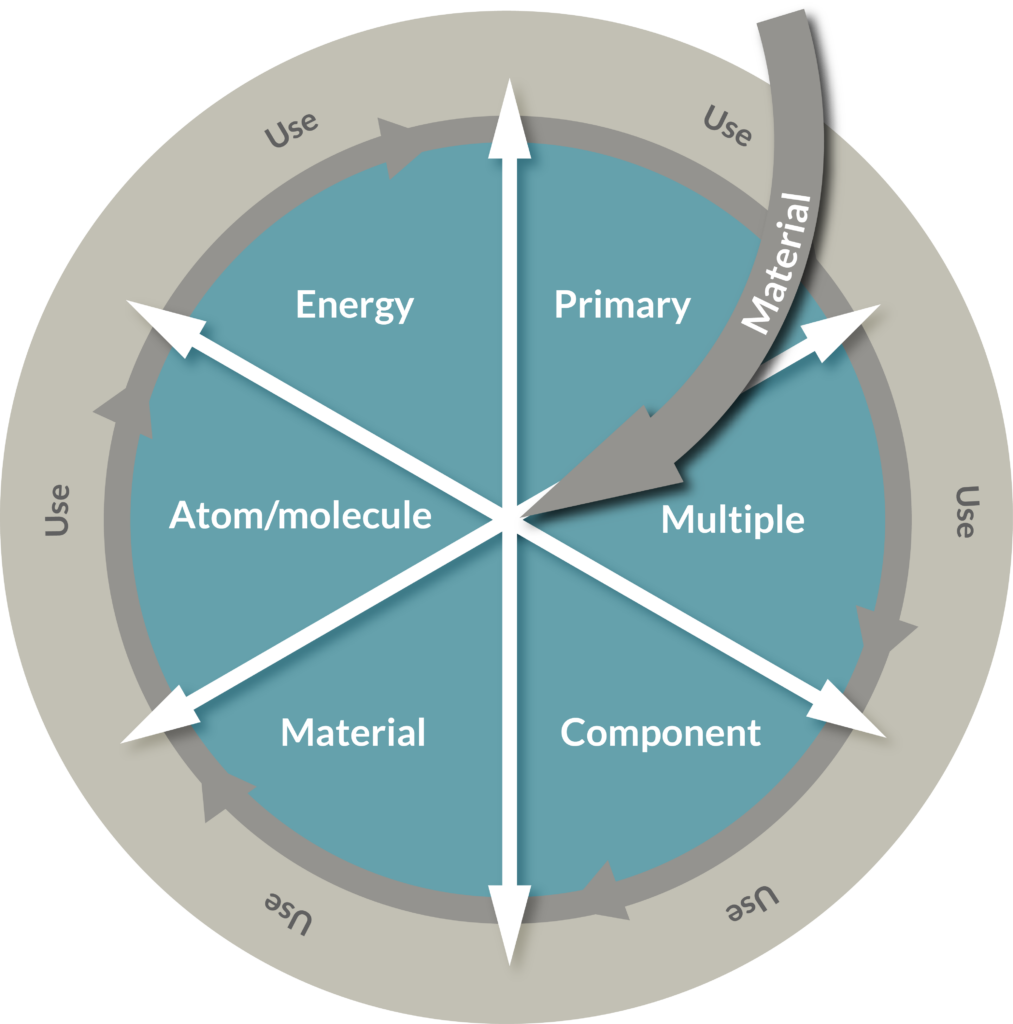The material wheel
To visualise sustainable use of materials we need to rethink. That is why RE:Source has developed the Material Wheel, a model based on the actual use of products and materials. The aim is to keep their value for as long as possible.
A sustainable material system is one of the major societal challenges that RE:Source is trying to solve. Through innovation, research and knowledge sharing, RE:Source contributes to solutions that lead to sustainable and efficient use of materials. It’s simply a matter of changing, so that our consumption is within the planet’s resources.
”The solutions will help to ensure that the value of the materials is kept at a high level for a long time and that they have high usage”
says RE:Source’s former Program manager Evalena Blomqvist.
Extend the life span
To achieve this, we need to rethink about materials, resources and waste. To visualise what it takes to extend the life span and the value of the materials, RE:Source has developed the Material Wheel.
– The Material Wheel focuses on the function and use of materials, not on the treatment processes and how they relate to other processes, as is the case in the classic waste hierarchy, says Evalena Blomqvist.
In short terms, one could say that all the materials we use, both in production and consumption, have been thrown into the wheel. The aim is to use as much material as possible for as long as possible and to provide as much value as possible in the meantime.
– For example, if a product is designed for a long life, it can spin for a long time in the wheel. The same thing happens if a product has been manufactured in such a way that the components can be reused, says Evalena Blomqvist.

Solutions for a change
It is important that RE:Source focuses on discussing the original reasons why we use material resources unsustainably and then proposes solutions for how we make changes in the right direction.
The Material Wheel becomes a way of visualising what we strive to achieve”
In order to create sustainable use of materials, innovations are required in the following areas:
- Production that results in products that have and provide a high material value in both primary and secondary use
- Reuse of components
- Functional material recycling through mechanical processes
- Reuse of moleculars by chemical, biological or thermal processes
- Energy recovery through combustion processes
These innovations are created through research and development in the following areas:
- Function (technology, process, design)
- Market
- Behavior
- Policy
- System (logistics, system analysis)


